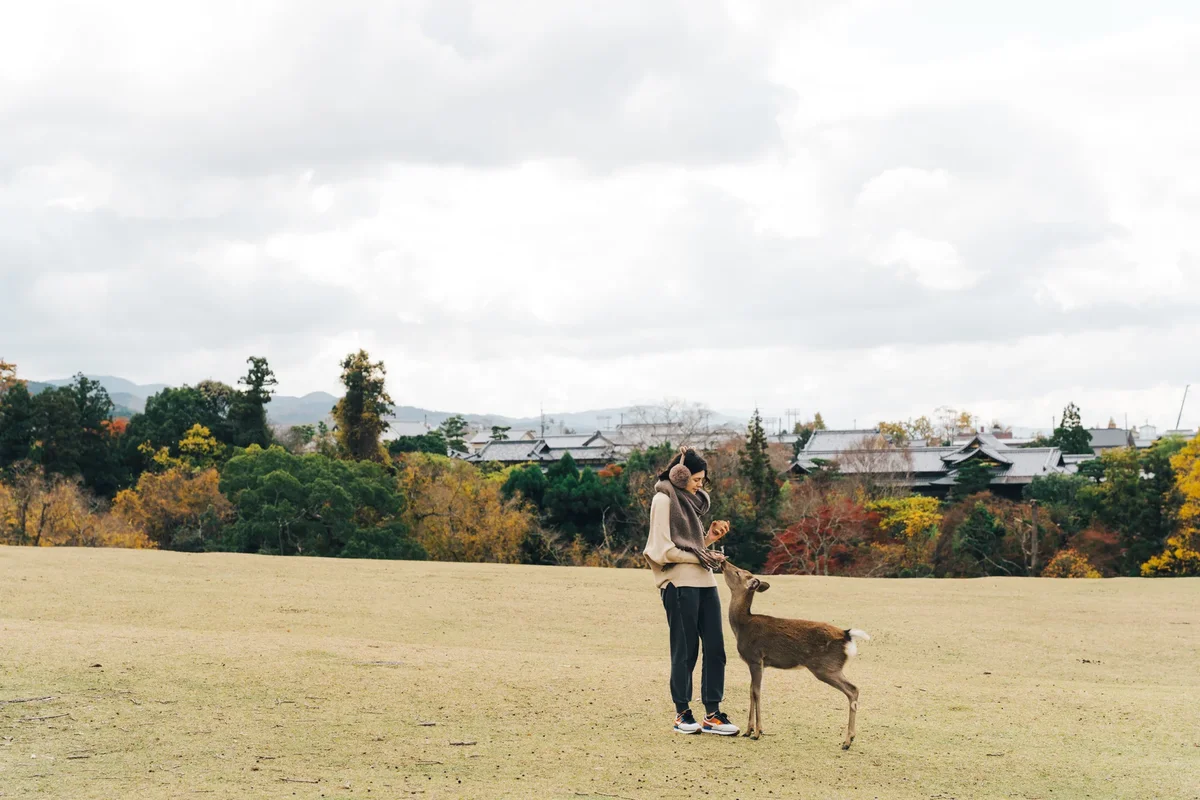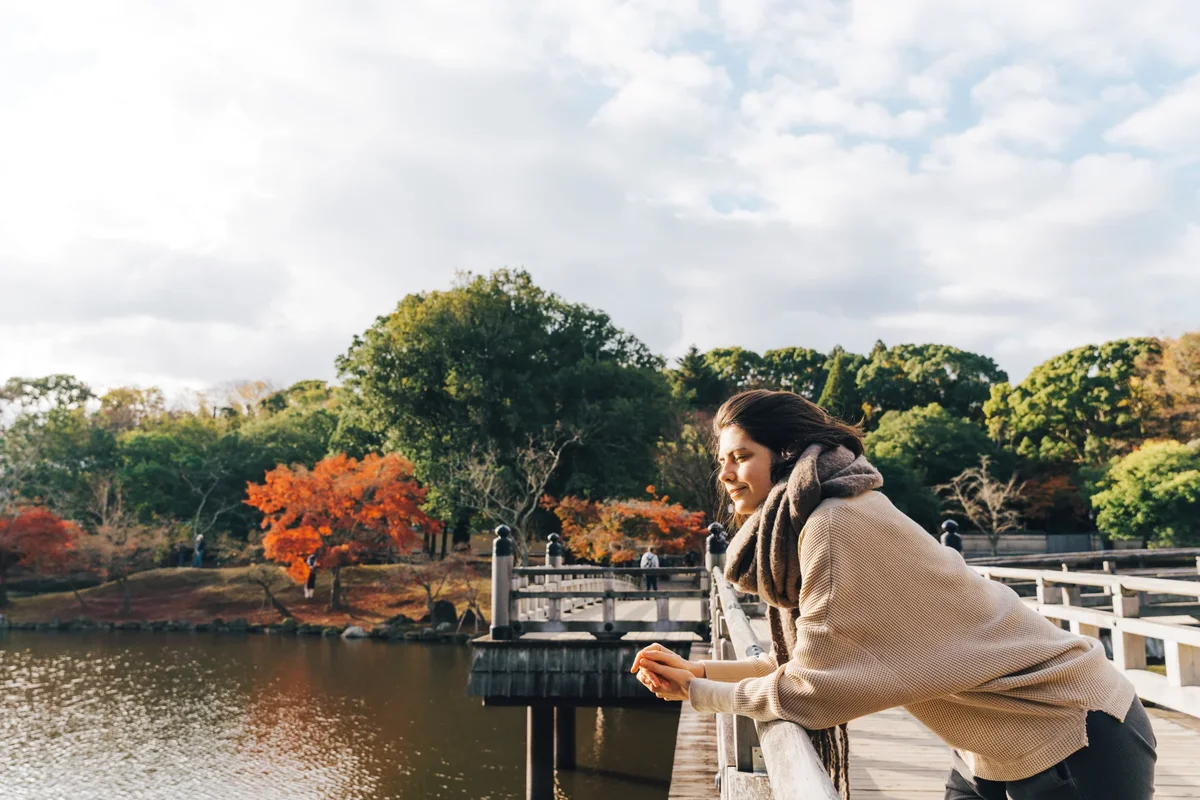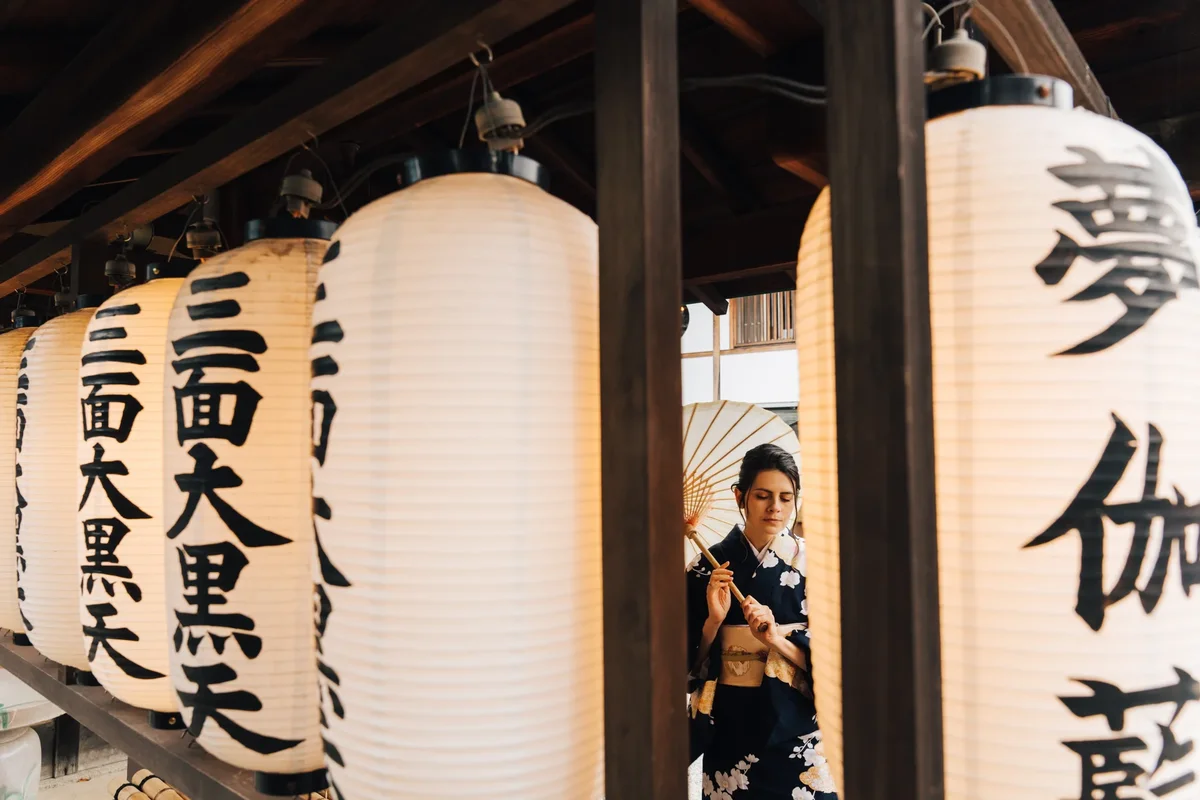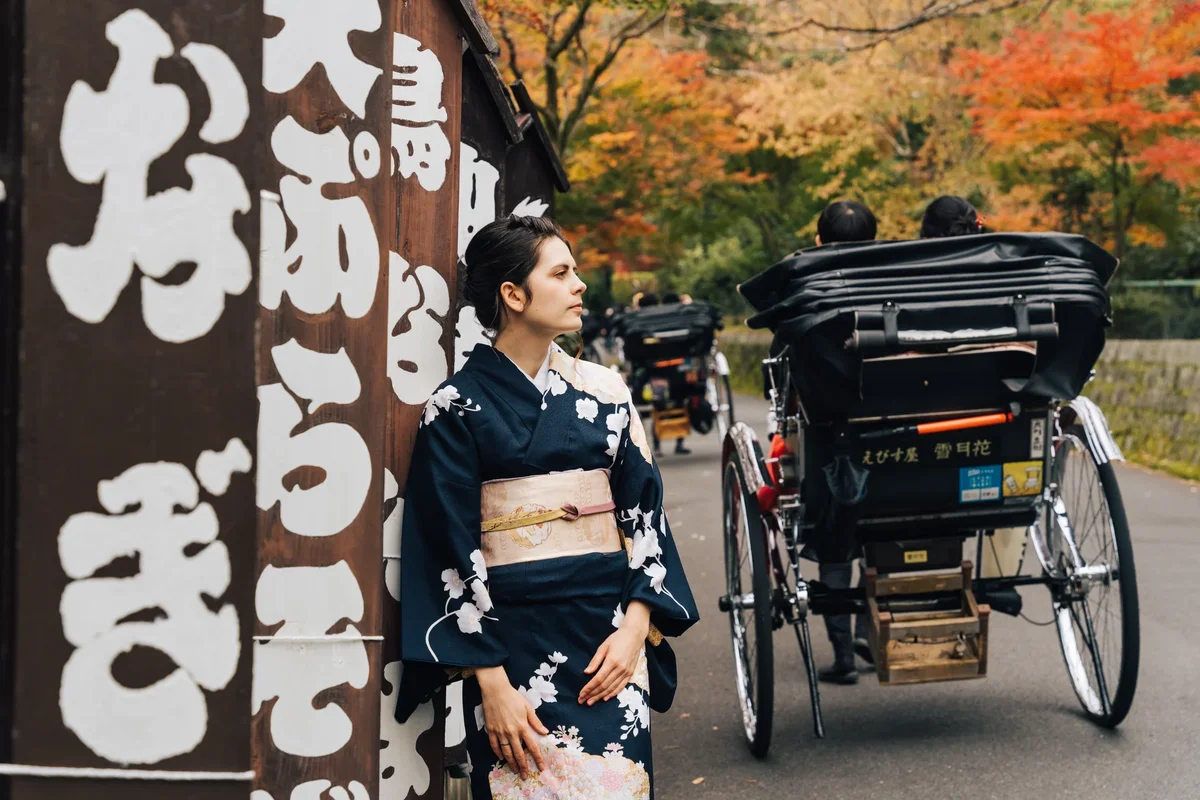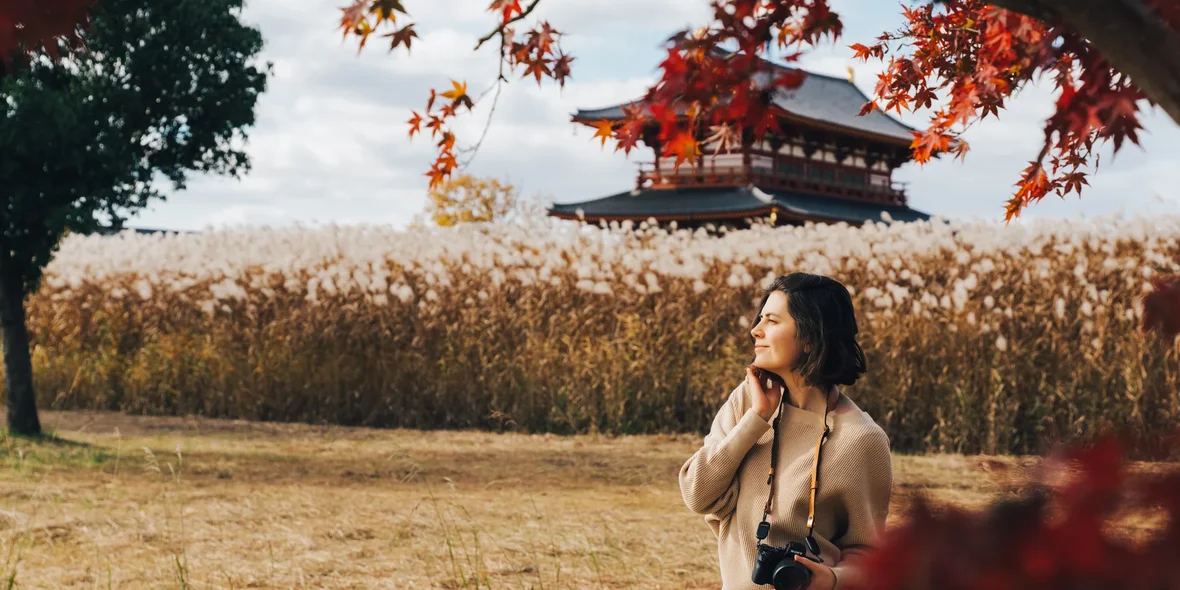
“Even Getting a SIM Card in Japan is a Quest”: a Story of Moving and Living in the Land of the Rising Sun
Galiya Berdnikova is an entrepreneur with 17 years of experience and a business mentor. At the moment, she lives in Japan and develops a real estate investment project based on the flexible ownership model around the world — BIRDNECK. We asked Galiya about life in Japan, the reasons for choosing this country, the features of the rental market, and the potential for investing in local real estate.
Getting to Japan and Obtaining a Start-Up Visa
— My name is Galiya. My husband and I have been living in Japan for about three years: the first year we lived in Tokyo during the COVID-19 lockdown, arriving at the very last flight. And for almost two years now we have been living on the island of Kyushu, in the city of Fukuoka.
We are not sure if this is our final destination. We will continue to explore Japan (including a plan to walk the entire country from north to south or cycle) and perhaps change our location.


— To qualify for permanent residence, you need to live in Japan for several years on a long-term visa, such as a work visa, business visa, or family reunification visa. Most categories require you to live in Japan for at least 10 years, but there is a point system format that allows you to try to get permanent residence faster.
The first big task is to get an annual visa with the possibility of extension (for example, a work or business manager visa) and a resident card. And to go a very long way before we even start talking about permanent residence. We tried to «break through» in different ways; in the process of searching, we applied to other countries — to Canada, for example.
The easiest way to come to the country and try it out is a student visa for language schools. By the way, Japanese is a must since not everyone speaks English everywhere here.
With a student visa, you can stay in the country for up to 2 years and study Japanese. But it is important that you have to study seriously and constantly (3-4 hours a day with 80% presence), otherwise the visa will be cancelled. Young people who come with a focus on studying, complete it, simultaneously starting to work part-time in Japanese minimarkets or in the delivery industry. But adults who work online or run businesses at the same time often cannot keep up with such a schedule.
We came the same way the first time: we studied and simultaneously managed businesses remotely. But it was too inconvenient and exhausting, so we left the country and started looking for other ways.
One of these ways is to open a business in Japan. But to do this, you need to stay in the country for 3–6 months. If you have assistants in Japan, you can come by proxy. Of course, all this is inconvenient or even almost impossible with a classic two-week tourist visa for Russians. It would be good if they give you a multi-visa with a month’s stay. But even in this case, there are still many problems: renting a place to live, getting a SIM card, etc., which in itself is something out of the realm of fantasy if you don’t have a resident card.
It is easiest for Americans and holders of other passports, who have the opportunity to come for six months at once even without a visa. They have time to calmly open a business while staying in the country.
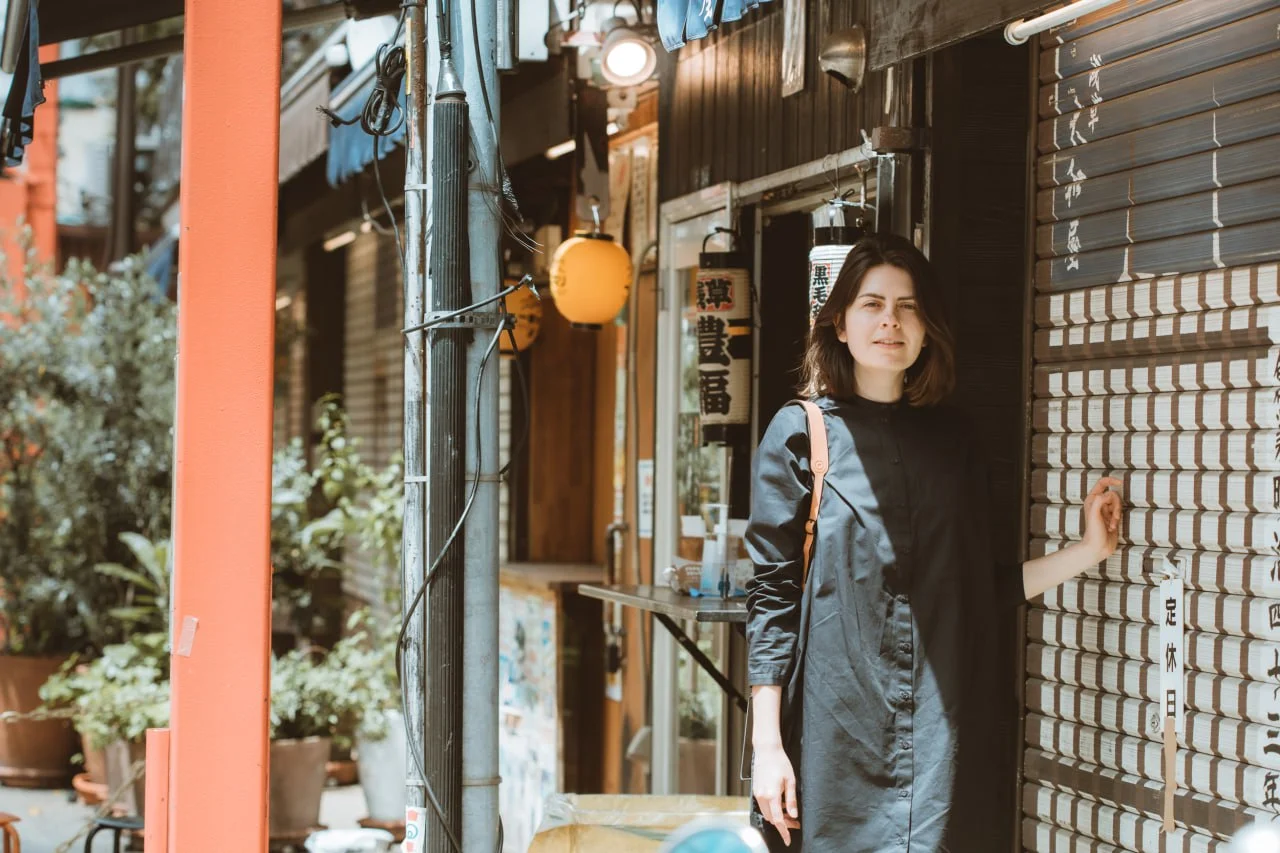
We went through the whole process of getting a startup visa and then opening a business.
— There is another way that the government has developed to simplify the process — obtaining a startup visa, which gives the right to stay in the country for 6 months. And during this time, you can open a full-fledged business.
I can’t say how much «easier» this path really is, because you’ll have to sweat to get this visa first and then continue to deal with the paperwork for another six months to open a real business.
But this has its advantages: startup programs provide a lot of free support, contacts of specialists, important meetings with the bank are arranged for the program participant, etc. On the downside, you must constantly report, be in touch, and move according to a strictly defined process with many rules.
We went through the whole process of getting a startup visa and then opening a business.
Here’s how it happened. While in South Korea in the spring of 2023, we applied with our business idea to the Fukuoka startup program, hoping for quick approval and permission to enter the country. But the process took much longer than we expected — 3 months until the final “okay, you’re accepted into the program.”
We happily arrived in the country on a multiple-entry visa, but it turned out that we had to complete a number of procedures before receiving our visa. The stumbling block in our case was the marriage certificate — we had it from Iceland. Of course, it was official, certified, etc., but the Japanese simply did not understand what kind of strange piece of paper it was, and it went somewhere “into the drawer,” wandering from immigration officer to officer.
Plus, the “startup visa” program itself is not very well developed and is not familiar to immigration officers. As a result, we were forced to do a visa run three times for a month. Fortunately, Korea was nearby, and during this time we managed to travel around it up and down.
And so, six months later, we are standing at the immigration center to get our startup visa, and they tell us, “You can’t get it here, get it in your country, go home!”
But isn’t the whole idea of the startup scheme to be in the country and get a visa here?
In short, we didn’t give up. We said, “We’re not going anywhere, the government has approved everything for us, we’ll sit here with you until we get it.”
In the end, we got everything! In September 2023, we had a startup visa in hand, and the whole process took about six months. This visa is valid for another 6 months, during which you need to open a business. That is, the whole path with papers and documents continues: reports in the City Hall, meetings with representatives, control, etc.
We barely managed to do everything on time, to be honest. But we opened everything and received a business manager visa for a year already. It will be time to extend it soon. I hope there will be no problems.


Foreigners are refused in 50–70% of cases already at the moment of simply showing the property.
Everyday Nuances And Features of Renting Housing in Japan
— A funny, curious situation that all newly-minted residents face is, of course, the quest with SIM cards and renting housing.
The thing is that you can’t get a SIM card without a residential address, but you also can’t rent a place to live without a registered SIM card and a phone number. This quest has workarounds, and everyone finds their own.
In general, a phone number is everything. You can’t do without it. It’s the same in Russia, but we don’t notice it because getting a number with a passport and registration costs nothing. In another country, you immediately feel how much you have to go through before you get the most basic human benefits: a phone number, a good rented apartment, a bank account, your first debit card (by the way, you can’t get one right away in Japanese banks — you have to live in the country for at least six months), and so on.
Credit cards and a business account are a quest of a different level. Until you live in the country for six months, it is difficult to count on anything. Not to mention that all communication must be in Japanese or work with companies created for foreigners. It is good that there are already many of them in Tokyo.
By the way, there are two types of taxes in Japan: state and local (regional). Income tax is progressive: the more you earn, the more you pay. It can be from 5% to 45%.
There is also a resident tax, which is levied at the place of residence. This tax consists of a constant part and a variable part, which depends on income. But on average, it comes out to 10%.
One of the big advantages is that the Japanese government pays 70% of the cost of medical expenses in most cases. Even fertility enhancement (which is quite expensive here and, as far as I know, is not covered by insurance). Compulsory medical insurance is quite inexpensive and has many advantages. We use company insurance. It is much more expensive, but what can you do — it is also a must-have.


— Renting an apartment in Japan is also a difficult task. If you plan to rent something small and cheap, like student options with a table and a bed, then it’s not that difficult. But if you want something decent, then you have to take into account that foreigners are refused in 50–70% of cases already at the moment of simply showing the property.
If you have a dog, it’s a different level of difficulty, as in this case you will only have access to 5% of the offers. And if it’s with a big dog, then this is an even more difficult mission.
I think it’s easier in Tokyo, there are already more options there that are aimed specifically at foreigners — furnished and without a guarantor. But the prices for such services are appropriate.
There are almost no such companies in Fukuoka, and the housing options are very poor. However, we were lucky and rented a large apartment on the 35th floor of the coolest residential tower in all of Kyushu, with a view of the sea, island, and mountains.
— I’ll tell you about some unusual features of renting in Japan.
To move into an apartment, you need a guarantor. Often this company is similar to an insurance company. This means that in addition to renting a home, you need to pay a guarantor fee (a large sum once, then there may be regular deductions). But everything is done to protect both the landlord and the tenant and to avoid inconvenience for all parties.
Few apartments allow pets. And animals have a category or size: only small ones may be allowed to stay, for example.
The apartment is rented without furniture and even without household appliances! That is, you have to buy a refrigerator, air conditioner, washing machine, and sometimes even a stove yourself. But the most important thing is that after the end of the lease, you have to leave everything exactly as it was. That is, take all the equipment. “Agreeing” like we do — I’ll supply the equipment, and you’ll give me a discount — won’t work. Nobody needs that. You come with your own — you leave with your own. Also, when tenants move in, they do a renovation. Accordingly, when you leave, you will have to pay for everything that has lost its former appearance, from stains to completely regluing all the wallpaper.
Leases can be pretty strict. For example, in our tower, you can’t have a piano in the apartment, and you can’t have guests, even your family. But we’ve already broken both of those rules. Don’t tell anyone.
Therefore, in general, to move into an apartment, you have to pay a considerable amount. Namely:
- First and last month of rent.
- Consider it a gift to the owner “for the keys.”
- Deposit amount for subsequent repairs.
- To the guarantor.
- For realtors.
- Fire insurance and other odds and ends.
As a result, the rental cost can usually be multiplied by 5-10, and this will be the amount needed for check-in. For example, if the rent is 150,000 yen (around $975 USD), be prepared to pay 1,200.000 yen (7800 USD) up front.
Important terms on the topic that are useful to know:
- Deposit (敷金, "shikikin").Typically the deposit is between 1 and 2 months of rent. This amount is returned at the end of the tenancy but may be partially or fully retained to cover repair costs if the apartment is not in perfect condition when you move out.
- Key fee or agent commission (礼金, "reikin“).This is a fee paid to the landlord for renting out the apartment. It is often equivalent to 1–2 months of rent. It is non-refundable and can be seen as a “thank you” for the right to rent the apartment. This fee is a feature of the Japanese rental market and can sometimes be avoided if the landlord offers this option.
- Real estate agent commission (仲介手数料, “chukai tesure”). Typically, this is an agent’s commission, which is equal to a month’s rent. The agent often helps with finding an apartment, paperwork, and communicating with the landlord, which makes this fee quite justified.
- Advance payment for rent (前家賃, “mae yarin”). Typically, you will be required to pay the first month’s rent, even if you are not moving in on the first of the month.
- Home insurance (火災保険, "kasai hoken"). Fire and other damage insurance is mandatory and the renter is required to take it out. It usually costs between 15,000 and 20,000 yen for two years, although the amount can vary.
- Lock change fee (鍵交換費用, "kagi kokan hiyo"). This is a one-time fee that is sometimes included in the bill to ensure the safety of the new tenant. Changing the locks costs around 10,000-20,000 yen.
Some people are surprised by the lack of central heating. Indeed, it is only available in the north. So in winter, apartments and houses, especially old ones, can be very, very cold — just a few degrees warmer than outside. When we lived in an old house, we heated only one room, the one we slept in. It was funny to go out in the morning: you open the door to the kitchen and bathroom, and your breath is just steaming because it is practically the outside temperature.
The Japanese warm themselves with air conditioners on warm mode, electric stoves, and a traditional Japanese heated table with a blanket — kotatsu (炬燵). There are also all sorts of devices like insulation for entrance doors, windows, etc. Modern apartments sometimes have heated floors, but not everywhere, but in certain areas. For example, we have heated floors in the living room and dining area, and it saves.
— As for real estate investments, I would like to note that Japan has a very well-developed history of share ownership: there is a whole legal structure for this. Moreover, shares can be freely owned by a foreigner, and the transaction can be completed remotely. So, on real estate marketplace websites, you can easily find the sale of a share in an object.
There are already quite a few small projects that have rebuilt old houses or are selling small country houses in shares. But the most striking Japanese project with premium properties and designer luxury is, of course, Not a Hotel. We look up to this project in many ways and see it as a great example and inspiration.
We are currently at the stage of developing financial models of flexible ownership in Japan for our investors: we are looking for what is more profitable and interesting, what type of real estate, in what region, and how it can be used with maximum efficiency for the owners. And of course, we are looking for the first property in this country that is suitable for us.
For now, one of the key ideas is to take a ready-made object in the Kitakaruizawa region (one of the most famous regions for recreation near Tokyo) in BIRDNECK share — a house in nature, in the forests, where you can come and relax. And at the same time, have access to all the other attractions of the country.
Another option is Fukuoka, where many tourists from Korea, China, and other countries come every year. Then it will be an apartment in a cool house, ready to receive tourists.
The main conclusion: living in Japan is a challenging but exciting experience that requires patience, preparation, and local knowledge. If you have the desire and interest in this country, it’s worth a try!
Do you want to share your personal experience of relocating and living in another country? Email us at info@realting.com. We will be happy to tell your story.
Author
I am responsible for editorial work. I write expert interviews and guides.








